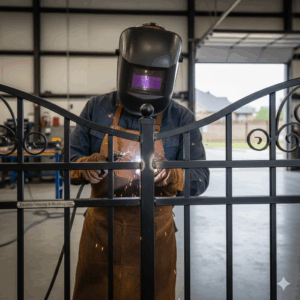Kapital and Corteiz are two powerful forces reshaping modern fashion through radically different paths. While Kapital thrives on tradition, detail, and artistry, Corteiz rides the wave of rebellion, youth, and culture. Both brands speak directly to people who value originality and purpose in what they wear. These aren’t mass-produced fashion labels chasing fleeting trends. They are movements—built from the ground up, driven by vision, and reinforced by loyal communities. Whether you connect more with Kapital’s storytelling or Corteiz’s raw energy, one thing is clear: both brands represent fashion that actually means something.
Kapital’s Artisanal Approach
Kapital is a Japanese brand born in the denim town of Kojima. Founded by Toshikiyo Hirata and later guided by his son Kiro, the brand mixes vintage American style with Japanese techniques. Kapital’s pieces often feature patchwork, bold prints, and traditional fabrics like sashiko and boro. Each item feels like a one-of-a-kind piece of art. More than a fashion label, Kapital is a celebration of textile heritage and experimentation. The brand doesn’t follow fashion trends—it sets its own rhythm, appealing to those who see clothing as cultural artifacts, not disposable items.
Corteiz’s Revolutionary Spirit
Corteiz (CRTZ) came onto the scene with an attitude: anti-mainstream, anti-hype machine, but full of hype anyway. Founded by Clint419 in West London, Corteiz skips the glossy campaigns and runs on street culture. Its core values are resistance, loyalty, and community. The Alcatraz logo is symbolic—about breaking out of systemic norms. With cryptic drops, limited access, and surprise events, Corteiz has created one of the most passionate fanbases in streetwear. It’s not just fashion—it’s a movement. You don’t just wear Corteiz to look cool; you wear it to stand for something.
Contrast in Design Philosophy
Kapital and Corteiz reflect opposite ends of fashion’s spectrum. Kapital is eclectic, deeply detailed, and rooted in tradition. It embraces imperfection, handcraft, and visual overload. Corteiz is clean, tactical, and deliberately simple in its silhouettes. Where Kapital is about storytelling through construction, Corteiz is about communication through symbolism. Kapital makes you look closer; Corteiz hits immediately. Their approaches differ, but both command attention and respect. They design for people who don’t want to look like everyone else—who see fashion as personal, expressive, and often political.
Marketing Without Marketing
Kapital and Corteiz both use non-traditional marketing, but with distinct methods. Kapital relies on cult appeal, stocked at select boutiques and discovered through niche communities and Instagram moodboards. It doesn’t shout—it whispers, and people listen. Corteiz takes the opposite route: direct to consumer, fast-moving, and in-your-face. Corteiz drops sell out in minutes, announced through cryptic social media posts and guerilla-style events. The hype is organic, not paid. Both brands succeed because they trust their audiences. They don’t push product—they build demand by staying authentic and exclusive.
Who Wears Kapital and Corteiz?
Kapital’s fans often come from creative fields—musicians, stylists, fashion collectors. Names like A$AP Rocky, Pharrell, and John Mayer wear Kapital for its artistry and uniqueness. Corteiz has become the go-to brand for UK youth, football culture, and global artists like Central Cee and Jorja Smith. Even Drake has been spotted in Corteiz gear. Both brands appeal to tastemakers—people who lead, not follow. Whether it’s Kapital’s handmade denim or Corteiz’s tactical tracksuits, these clothes aren’t just worn for style—they’re worn for identity and influence.
The Power of Scarcity
Scarcity isn’t just a business tactic for these brands—it’s part of their DNA. Kapital produces in small batches due to its handcrafted nature. It’s often hard to find, which makes it more desirable. Corteiz, meanwhile, builds scarcity into its launch strategy: limited drops, location-based events, and secret access. The scarcity adds value, but also keeps the community tight. Fans feel like insiders, not customers. In a world of overproduction, Kapital and Corteiz prove that fewer, better things can carry more cultural weight than anything mass-produced.
Culture Over Commerce
Neither Kapital nor Corteiz prioritizes profit over culture. Kapital could easily scale up production and go mainstream—but it doesn’t. It stays true to its slow-fashion roots. Corteiz has had offers from major retailers but refuses to compromise its ethos. It continues to run independently, selling only through its own platform. That loyalty to culture over commerce has won them trust. Fans know these brands won’t sell out. They don’t just want your money—they want your belief in their mission. That’s what makes their success sustainable and respected.
Influence Without Dilution
Kapital influences global fashion through its design language—visible in other brands, runways, and even museum pieces. Corteiz influences culture by starting conversations and creating moments that feel revolutionary. Both have stayed true while influencing others. They’ve built strong identities that others now imitate, but neither has diluted its values to reach a wider audience. Their growth hasn’t come at the cost of integrity. That’s a rare thing in fashion today. These brands influence not because they adapt to the world, but because the world adapts to them.
Conclusion: Two Brands, One Message
Kapital and Corteiz couldn’t look more different, but they speak the same truth: authenticity matters. Kapital tells stories through fabric, inspired by history and tradition. Corteiz builds movements from the ground up, powered by resistance and raw energy. One stitches its soul into every thread; the other prints its message boldly across chests and backs. Together, they represent what fashion should be—personal, powerful, and purposeful. Whether you connect with Kapital’s quiet craft or Corteiz’s loud defiance, both remind us that true style comes from within—not from trends.









